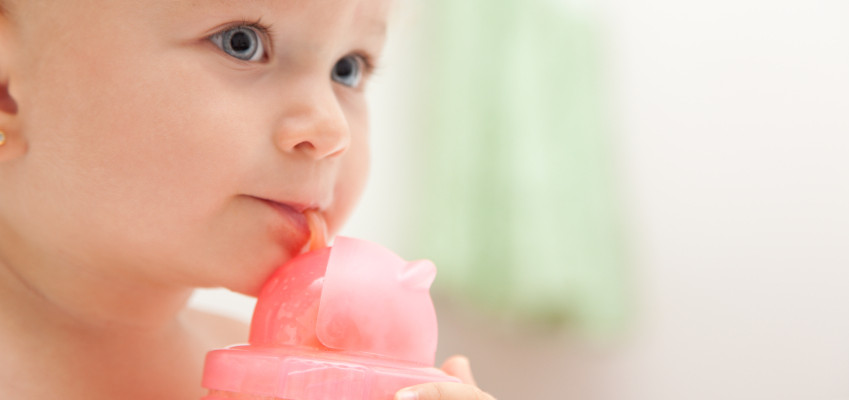
At the 9-12 month mark, you should start thinking about weaning your baby from the bottle. Prolonged bottle use can lead to a misshapen palate, protruded teeth, and can cause articulation delays, such as a lisp, later on.
And although the seemingly logical transition would be to move on to a sippy cup, there is some evidence to say otherwise. Using a sippy cup is actually too similar to using a bottle and can have adverse long-term effects.
3 Reasons to Say No to the Sippy and Go Straight for the Straw
1. A sippy cup can alter tongue placement (which also happens when using a bottle). This means that the tongue is pushed in a forward position, which can also cause the teeth to protrude over time. These structural changes are what can lead to speech and articulation delays. When using a straw or a regular cup, the tongue is placed behind the teeth.
2. Babies do a similar “head back” motion + sucking, in order to get liquid out when using a sippy cup. Moving the head back to get liquid does not engage the facial muscles (e.g. cheeks, lips, tongue) as they should be worked for continued sensorimotor development. Sippy cups don’t provide the oral-motor workout, but using a straw does!
3. Use of sippy cups have been tied to an increase in cavities and tooth decay. When babies and toddlers drink from sippy cups, they immerse the six upper teeth, which means constant exposure to the liquid, leading to tooth decay if there is something sugary (like juice) inside.
If you are using a sippy cup, think of it only as a transition to a straw or a regular cup to get less attached to the bottle. And although straw cups and regular cups can be more of a mess (because they don’t have the valve that sippy cups do), it is better developmentally for your baby.
Try the Oxo Straw Cup and Oxo Training Cup to help with transition to say sayonara to sippy cups!
